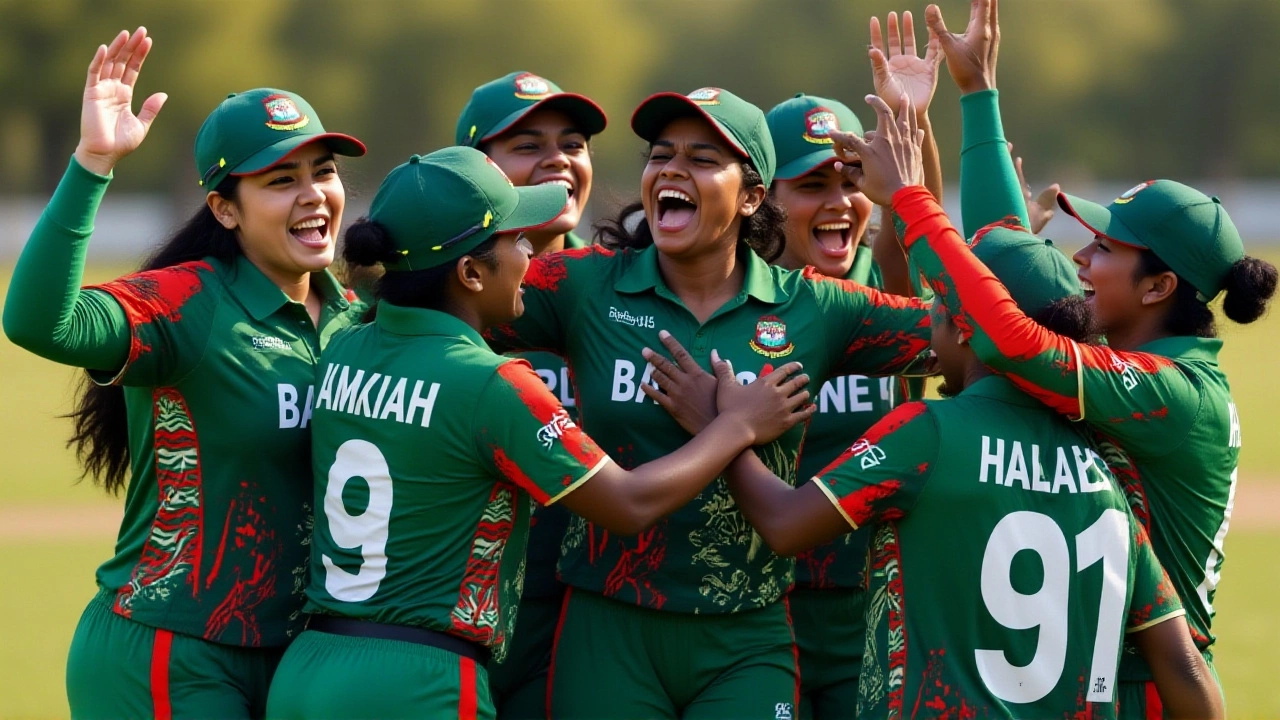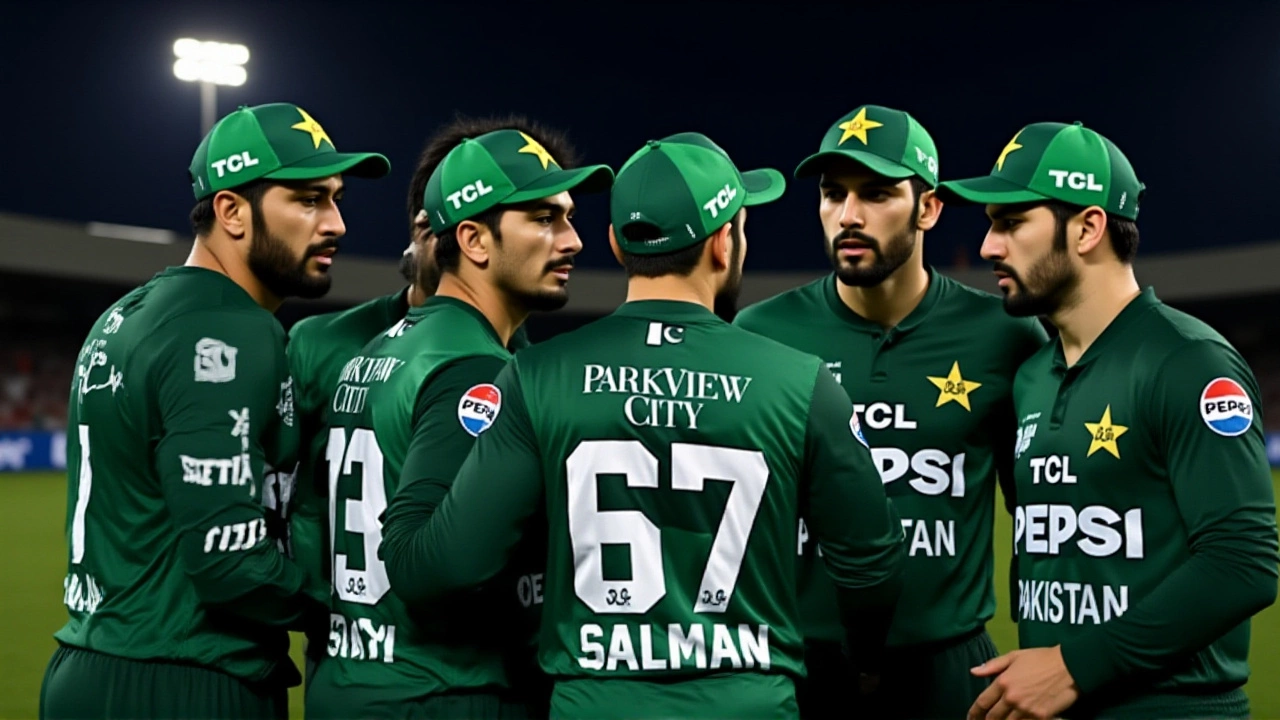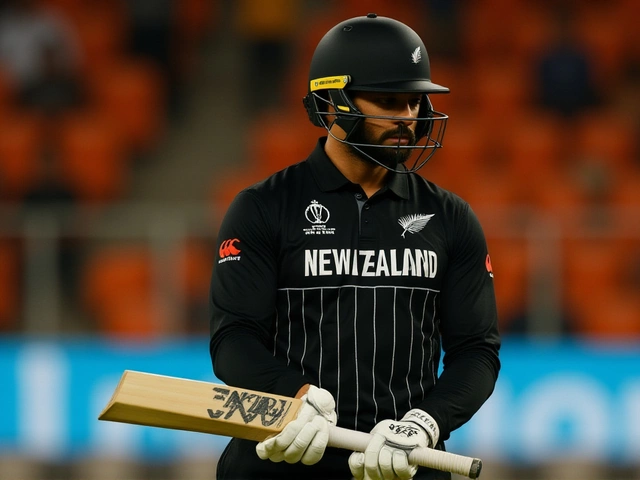When the final ball of the Super Over sailed over long-off for four, Pakistan A had done the unthinkable—won their third ACC Men's Asia Cup Rising Stars 2025 Doha title in the most nerve-shredding fashion possible. Just two days earlier, Bangladesh A had stunned India A in a similarly chaotic Super Over, but this time, the script flipped. The ACC Men's Asia Cup Rising Stars 2025 West End Park International Cricket Stadium in Doha became the stage for two of the most gripping finishes in youth cricket history—and the final one sealed a legacy.
A Dramatic Semi-Final That Set the Tone
On November 21, 2025, Bangladesh A and India A delivered a match that felt like a Bollywood thriller. Both teams finished their 20 overs at 194/6. It wasn’t just the scoreline that was identical—it was the chaos. Habibur Rahman Sohan, the explosive Bangladesh A batter, had smashed sixes at will, including one off Vijaykumar Vyshak that cleared deep extra cover when his side was 84/2. Then came the moment that changed everything: a dropped catch at long-off in the Super Over. Ashutosh Sharma, India A’s finisher, was given life after a fielder misjudged a straightforward catch. He took full advantage, depositing the final ball for four. Bangladesh A’s hopes vanished. The crowd in Doha fell silent. The twist? India A’s Suryavanshi had earlier scorched 38 off just 15 balls—a reminder that youth cricket isn’t just about potential, it’s about nerve.Final Showdown: Bangladesh A’s Heartbreak, Pakistan A’s Redemption
Two days later, the same stadium hosted the final. Bangladesh A, buoyed by their semi-final win, won the toss and chose to bowl. Their spinners, led by Ripon Mondol, strangled Pakistan A early. At 84/4 in 10 overs, it looked like Bangladesh A were cruising. But then came the collapse. Pakistan A lost their next six wickets for just 41 runs. The turning point? Ripon Mondol himself, who took three wickets in the penultimate over—only to be the architect of his own team’s downfall. His heroics with the ball became the foundation of a collapse that left Pakistan A all out for 125. Bangladesh A, chasing 126, fought hard. They reached 125/9. The tie. Another Super Over.And this one? Even more brutal. Ahmed Daniyal, Pakistan A’s 19-year-old left-arm spinner, delivered the spell of his life. Four balls. Two wickets. Just six runs. He bowled Akbar Ali, the Bangladesh A captain, with a slower ball that dipped viciously. Then he clean-bowled the dangerous Sohan. The pressure was suffocating. Bangladesh A needed 10 runs off four balls. They got eight. The final ball? A dot. The crowd roared.
Then came Saad Masood. With two balls to spare, he cracked a boundary off the final bowler to seal it. Pakistan A had done it. Again. Their third title in the tournament’s history. No team had ever won it three times. And they did it by surviving two consecutive Super Over nightmares.

Why This Tournament Matters More Than You Think
This wasn’t just another youth tournament. The ACC Men's Asia Cup Rising Stars 2025 Doha is the quiet engine of Asian cricket’s future. No Virat Kohlis. No Shakib Al Hasan. Just raw talent, raw nerves, raw ambition. Players like Habibur Rahman Sohan, Ahmed Daniyal, and Saad Masood aren’t just prospects—they’re the next generation of Test match warriors. The fact that both semi-final and final went to Super Overs isn’t luck. It’s proof that the gap between India, Pakistan, and Bangladesh’s emerging squads has vanished. These aren’t ‘A’ teams anymore. They’re pressure-tested warriors.India A’s Suryavanshi, who could’ve won the semi-final, didn’t get a chance in the final. Bangladesh A’s Akbar Ali, captain and emotional leader, lost twice in four days. Pakistan A’s win wasn’t about star power—it was about composure under fire. And that’s what selectors watch for.

What’s Next for These Players?
The ACC doesn’t just organize tournaments—it scouts them. Players who shine here often get fast-tracked. Ahmed Daniyal’s Super Over performance in the final? That’s a ticket to the Pakistan national camp. Sohan’s power-hitting against India A? He’s on the radar of the Bangladesh selectors. And what about the dropped catch? That’s the kind of mistake that haunts young cricketers. Or fuels them.The next big step? The U19 World Cup next year. These same players could be leading their nations on the global stage. This tournament isn’t just about trophies. It’s about identity. It’s about who steps up when the lights are brightest—and the stakes are highest.
Frequently Asked Questions
How did Pakistan A win the ACC Men's Asia Cup Rising Stars 2025 after losing their final group match?
Pakistan A didn’t lose their group match—they finished second in their group after a close defeat to Sri Lanka A, but their consistent performances in knockout stages, especially Ahmed Daniyal’s Super Over heroics and Saad Masood’s cool finishing, carried them through. The tournament’s single-elimination format meant every match after the group stage was do-or-die, and Pakistan A thrived under pressure.
Why were there no senior players in the tournament?
The ACC Men's Asia Cup Rising Stars is specifically designed for under-23 developmental squads, meaning senior international players are excluded to give emerging talent a platform. This ensures that players like Habibur Rahman Sohan and Ahmed Daniyal get high-pressure exposure without the shadow of established stars, helping them build confidence and decision-making skills needed for senior cricket.
What impact will this tournament have on future national selections?
Performance in this tournament directly influences selection for national U19 and senior A-team camps. For example, Ahmed Daniyal’s Super Over performance in the final is likely to fast-track him into Pakistan’s senior squad for the upcoming home series against England. Similarly, Bangladesh A’s Ripon Mondol and India A’s Suryavanshi are already being monitored by their respective cricket boards as potential ODI prospects for 2026.
How does this tournament compare to previous editions?
The 2025 edition was the most competitive yet. Previous finals were decided by margins of 15+ runs, but this year’s knockout matches were decided by the narrowest possible margins—Super Overs. The average run rate in the final overs jumped 22% compared to 2023, indicating a dramatic rise in batting aggression and bowling pressure handling among youth players across Asia.
Why was the tournament held in Doha, Qatar?
Doha was chosen for its world-class facilities, consistent weather conditions, and neutral ground status. The ACC has been rotating host nations to give exposure to emerging cricketing hubs. Qatar’s investment in cricket infrastructure since 2020, including the West End Park stadium, makes it ideal for developmental tournaments that require reliable pitch conditions and minimal disruptions.
Who were the standout bowlers of the tournament?
Ahmed Daniyal (Pakistan A) was the clear standout, taking 7 wickets at an economy of 5.8 in the knockout stage, including 2 for 6 in the final Super Over. Bangladesh A’s Ripon Mondol also impressed with 9 wickets overall, especially his 3-wicket over against Pakistan A. India A’s Suyash Sharma finished with 8 wickets and was the tournament’s most economical spinner, conceding just 4.9 runs per over.





